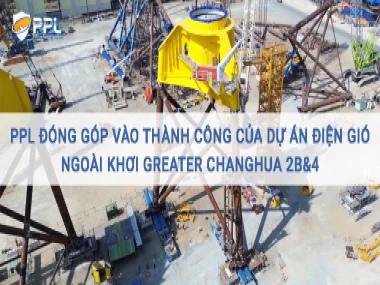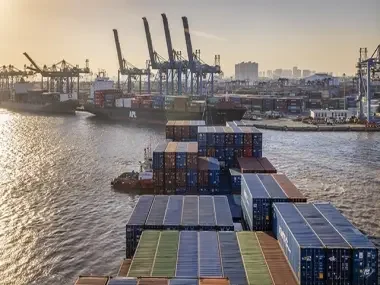Where is Vietnam's logistics industry on the world map?
While China is aiming to shorten domestic delivery time to 1 day, Vietnam still has domestic delivery time from 5 to 7 days.
Logistics is a service industry that is considered the lifeblood of the economy. It plays an important role in connecting and promoting economic and social development.
In this article, we will see how far Vietnam's logistics has developed and the future of the industry in the coming years.
Current status of Vietnam's logistics
Vietnam has a geographical location stretching from North to South and a long coastline with a number of deep-water ports suitable for rail and sea freight transport, in addition to the main transport by road and air.
For freight transport by rail, the national railway network currently has a total length of 3,143 km and 277 stations, including 2,703 km of main lines, 612 km of stations and branch lines. The railway passes through 34 provinces and cities, 4/6 economic regions of the country.
The operating efficiency of most main railway lines is currently only about 17-25 pairs of trains/day and night, the average operating speed for freight trains is 60 km/h. Most railway lines were built a long time ago, so they have low technical standards, many limitations on load capacity, so the train speed is low, reducing competitiveness compared to other modes of transport.
For transport by waterway and sea, although in the world this route accounts for up to 80% of the volume of transported goods, in Vietnam it only accounts for less than 20% of the volume of transported goods.
According to the Vietnam Shipowners Association, the Vietnamese flagged fleet currently has 1,563 ships, with a total tonnage of about 12.7 million DWT. The specialized fleet accounts for the majority with 1,043 ships, with a total tonnage of 11.3 million DWT. However, of the above cargo ships, nearly 800 ships (accounting for 77%) are small and medium-sized cargo ships (total capacity from 5,000 GT to 10,000 GT). There are only 13 ships over 30,000 GT with an average age of 16.8.
Compared to the world, Vietnam's container fleet is too small and has almost no growth in the period 2016 - 2020. Currently, the whole country has only 10 container shipping companies, owning 48 container ships with a total capacity of 39,519 Teus, a total tonnage of 548,236 DWT.
Vietnam's fleet can only transport goods on inland waterways and short routes to China and Southeast Asia. The market share of transporting export goods to Europe and America falls into the hands of foreign enterprises with large scale and tonnage. The market share of transporting import goods is decreasing. If in 2015, the Vietnamese fleet accounted for 11% of the market share, by 2018 it was 7% and by 2020 it was 5%.
For road transport, although logistics costs are much higher than those of sea and rail (the cost of transporting a 40-foot container from Hanoi to Ho Chi Minh City is about 40 million VND, 9.7 times higher than that of sea transport and more than 2.5 times higher than that of rail transport), most businesses still choose this method because road transport is directly connected to the system of seaports, airports, and stations, is highly adaptable to all terrains, and can be proactive in terms of transportation time.
Compared to the above types, road transport is still the dominant mode of transport, accounting for over 70% of total freight transport.
Regarding the method of transporting goods by air, according to the Civil Aviation Authority of Vietnam, there are currently nearly 70 international airlines and 4 domestic airlines transporting passengers and goods, of which 29 international airlines use specialized cargo aircraft. International airlines account for 80% of the total volume of goods transported by air in Vietnam.
Although Vietnam also has cargo airlines such as Vietnam Airlines Cargo or Vietjet Air Cargo, they do not use specialized aircraft to transport goods, but combine passenger and cargo transport. At the end of 2022, the IPP Air Cargo transport airline of "luxury goods king" Jonathan Hanh Nguyen applied for a flight license, but then, due to the gloomy situation of the global economy, the company's Board of Directors decided to withdraw the application.
Recently, a newcomer has entered the market, Vietravel Airlines Cargo. The company's goal is to use 2 to 4 dedicated cargo aircraft, the Boeing 737-800F, to transport domestic and Asian goods in the first year. The number of aircraft will double in the following year.
Currently, the number of enterprises in the logistics sector in Vietnam is about 40,000 and continues to grow, covering the fields of transportation, warehousing, customs clearance and distribution. Of these, more than 5,000 enterprises operate in the international logistics sector, with 89% being small and medium-sized Vietnamese enterprises, 10% being joint venture enterprises and 1 enterprise with 100% foreign capital.
Limitations of Vietnamese logistics
Despite accounting for a large number, Vietnamese logistics enterprises only account for 30% of the market share, the rest is a fragmented piece of cake.h for foreign enterprises.
Vietnam's logistics costs are still relatively high (2022 figures - total logistics costs account for 16.8% of GDP, while the world average is 11% of GDP). Customs procedures and specialized inspections are still complicated and overlapping; clearance time for import and export shipments is prolonged. The connection between logistics enterprises and the leading role of the domestic industry has not been formed.
The lack of synchronization in logistics infrastructure is also a barrier. For example, Cat Lai port is the largest international container port in Vietnam, a key hub in the Southeast region's seaport system, but for many years the traffic structure has not been reasonable, the roads have been congested, causing transportation activities to significantly reduce efficiency.
logistic-1-7521
According to Mr. Tran Thanh Hai, Deputy Director of the Import-Export Department, Ministry of Industry and Trade, the transport infrastructure system is not yet synchronous, the connectivity between sea, rail and road transport is still limited. The lack of national and international logistics centers in key economic areas to act as a hub for goods distribution are barriers, causing logistics costs to increase. In addition, the participation of foreign enterprises with new forms of transportation and modern digital technology also poses challenges for domestic logistics enterprises.
Another limitation is the quality of human resources. It is expected that by 2030, the demand for human resources in logistics will be more than 200,000 people. According to Mr. Nguyen Minh Duc, Vice President of the Vietnam Logistics Human Resources Development Association, the demand for logistics human resources is very large, but the current human resources and quality of human resources do not meet the requirements of the market (meeting only about 10% of the demand).
The Vietnam Logistics Report 2022 shows that the number of workers who are properly trained in logistics services only accounts for about 5-7% of the number of workers working in this field. According to a survey by the Ho Chi Minh City Institute for Development Studies, up to 53.3% of enterprises lack a team of employees with professional qualifications and knowledge in logistics, 30% of enterprises have to retrain employees, and only 6.7% of enterprises are satisfied with the expertise of their employees.
Mr. Duc said that schools that provide logistics training need to innovate their programs and cooperate more with businesses to improve students' practical knowledge of logistics.
In addition, as mentioned above, the low speed of railway trains, the small tonnage of seagoing vessels, the highway system connecting provinces and cities nationwide is still under construction, there are no specialized cargo planes, the limitation of warehouses, etc. are factors that prevent Vietnamese logistics from shortening the time of goods delivery as well as expanding the scope to European and American countries.
Huge room for development
However, according to international experts, the room for logistics is still very large because Vietnam is one of the countries with the fastest economic growth rate in the world. Vietnam's geographical location is in the center of the Asia-Pacific region, where the economies are developing very dynamically and it is also a busy freight route. Vietnam's international economic integration is increasingly deep with many bilateral and multilateral trade agreements signed.
Vietnam's logistics market is ranked 11th in the group of 50 emerging logistics markets in the world, with a growth rate of 14%-16%/year. In 2022, the total import-export turnover will reach more than 723 billion USD, an increase of 10% compared to 2021. This figure has a great contribution from the logistics industry.
Mr. Vo Duy Thang, Head of the Department of Transport and Maritime Services, Vietnam Maritime Administration, said that according to the planning for the development of the seaport system in the period of 2021-2030, with a vision to 2050, it is forecasted that the cargo through Vietnam's seaports by 2030 will be from 1,140 to 1,423 million tons. This figure shows that the market for maritime transport is very large, opening up platform, bringing new vitality to the development of Vietnam's logistics industry.
On December 22, 2021, the Prime Minister issued Decision No. 221, amending and adjusting a number of contents in Decision No. 200 to suit the actual situation.
The content of Decision 221 mentioned the goal that by 2025, the contribution ratio of the logistics service industry to GDP will reach 5%-6%.
Decision No. 221 has added an action roadmap for the industry until 2025. Specifically, in 2023, a preliminary review and assessment of the implementation results of the action plan will be conducted, and theoretical and practical bases will be prepared for research and development of a strategic project for the development of Vietnam's logistics service industry for the period 2025 - 2035, with a vision to 2045.
The Prime Minister has assigned the Ministry of Industry and Trade to preside over the development of this project, with the goal of "developing logistics, creating connections to bring goods to the right place, to the right place, to grow best and be controlled. Especially how to connect Vietnamese goods to reach out more widely to the world". The Ministry of Industry and Trade has recently worked with the leaders of Hai Phong, Quang Ninh, Thua Thien Hue, and Da Nang - the hubs for logistics development in the North and Central regions, and is expected to continue working with Lao Cai province, the Northwestern localities, and the southern provinces and cities, especially the Southwestern region.
logistic-2-9674
According to Mr. Tran Thanh Hai, Deputy Director of the Import-Export Department under the Ministry of Industry and Trade, in order for the Vietnamese logistics industry to "take off", it is necessary to implement a number of solutions, including: investing in and developing a more synchronous and modern transport infrastructure; training human resources to meet market demand; issuing policies to encourage logistics enterprises to transform digitally and greenly; simplifying and improving the quality of administrative procedures; investing in modern means of transport; implementing a smart customs model; and implementing financial and credit support policies for logistics enterprises.
According to Mr. Hai, policies to support and develop logistics need to be consistent with the economic characteristics of each locality. Special attention should be paid to perfecting the legal framework to ensure a consistent and comprehensive policy to manage logistics activities.
According to the proposal of the Vietnam Logistics Service Enterprises Association, the state needs to standardize logistics infrastructure services by applying standardized fares and unifying the fee collection system. In addition, it is necessary to form an electronic data exchange system between parties such as transportation companies, warehouses, and customs. If the parties are connected through a single electronic system, processing operations will save a lot of time./.
According to viettimes. opportunities for Vietnamese and foreign shipping fleets to participate in the market.
Mr. Dao Trong Khoa, Chairman of the Board of Directors of Asean Cargo Gateway Joint Stock Company, said that Vietnam's air transport growth rate is 9.5%, the largest in Southeast Asia, double the region's growth rate of 4.7%, which is also a large market for logistics businesses.
The booming trend of e-commerce in Vietnam with "big guys" such as Shopee, Lazada, Tiki... has created conditions for businesses to invest in warehouse infrastructure, means of transport, and form a logistics supply chain. This model is called 5PL, or e-Logistics - a new logistics method associated with e-commerce.
So how can Vietnam's logistics "take off"?
First of all, we must mention the government's interest in the logistics industry.
The government has paid great attention to promoting the development of the logistics industry in Vietnam. On February 14, 2017, the Prime Minister issued Decision No. 200 approving the Action Plan to enhance competitiveness and develop Vietnam's logistics services by 2025. This is the foundation stone.





